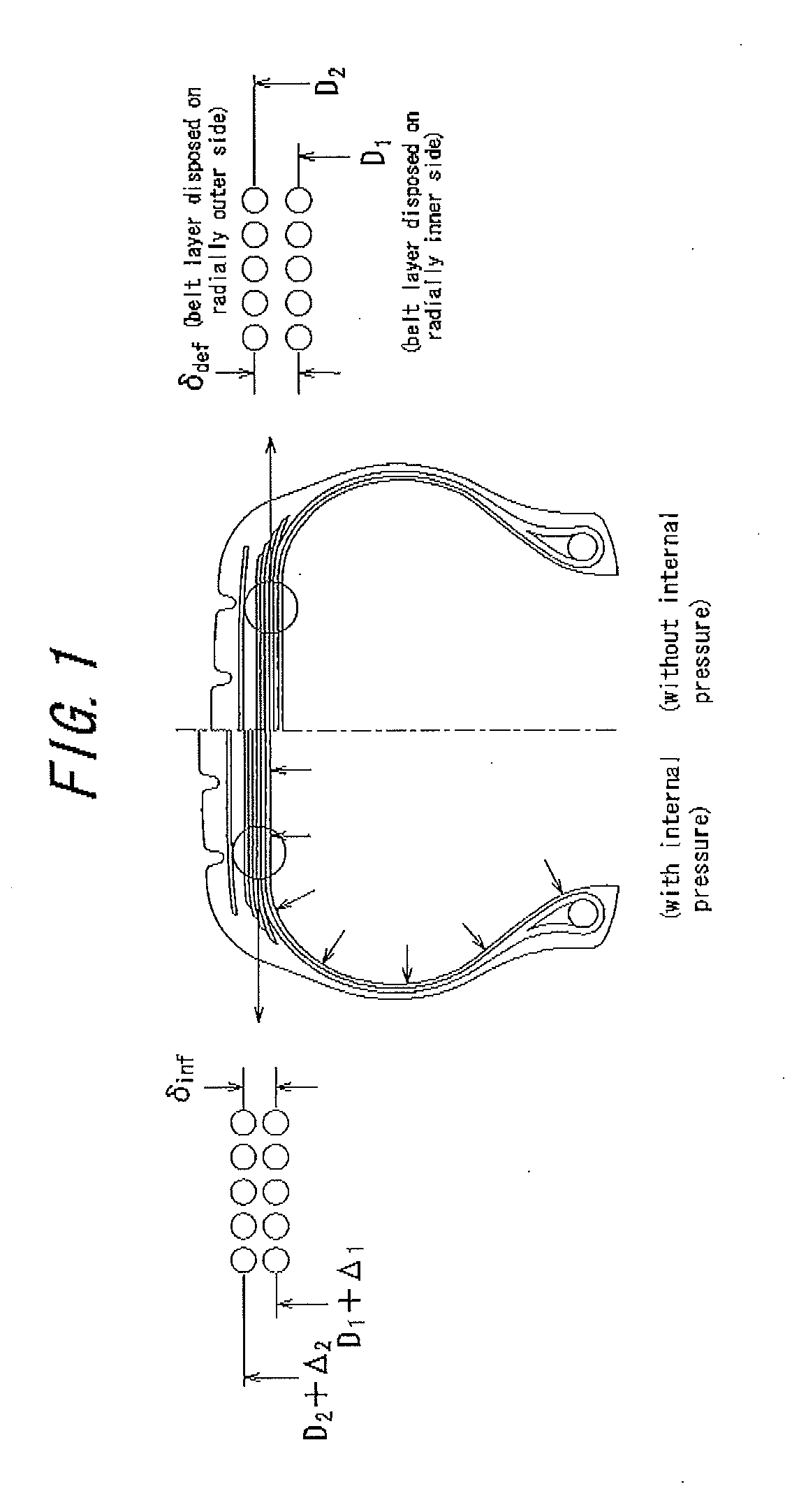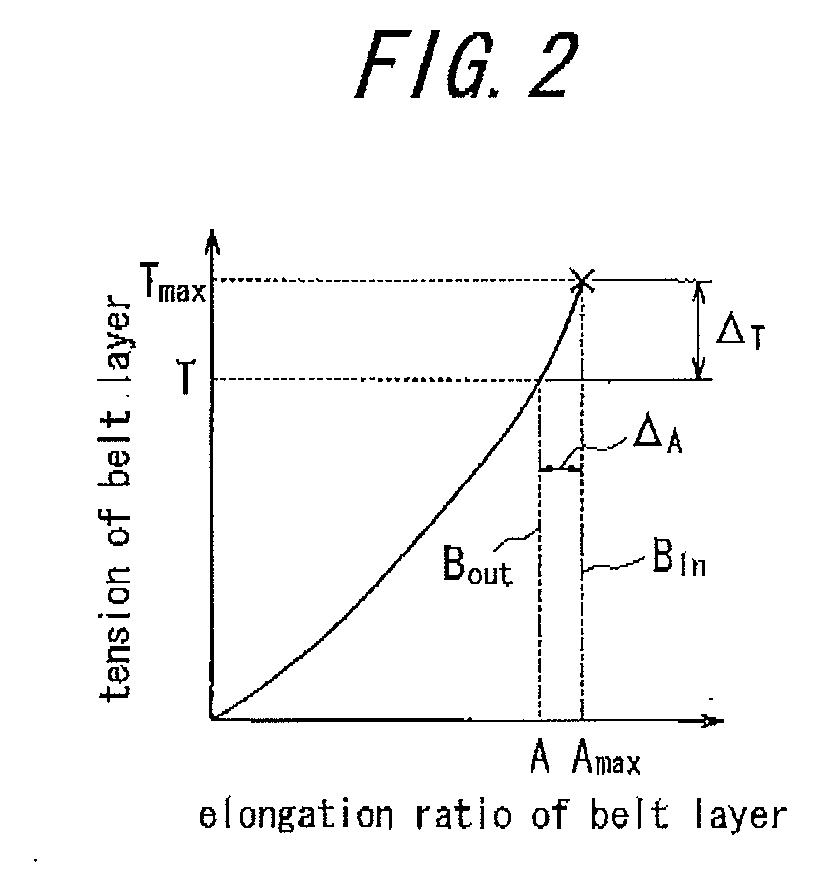Radial tire for aircraft
a technology for aircraft and tires, applied in aircrafts, special tyres, transportation and packaging, etc., can solve problems such as increasing tire weight, and achieve the effects of reducing stiffness, reducing elongation, and reducing the performance of the cord
- Summary
- Abstract
- Description
- Claims
- Application Information
AI Technical Summary
Benefits of technology
Problems solved by technology
Method used
Image
Examples
example
[0052]Pneumatic tires having a size of 46×17R20-30PR and various specifications shown in Table 1 are produced. Each tire is mounted on a normal rim according to TIRE and RIM Association (TRA) and weight and pressure resistance of each tire are investigated. Pressure resistance of a tire is investigated as a factor of safety (pressure at break). The results are shown in Table 1.
[0053]A zigzag endless belt, as shown in FIG. 6a, formed by spirally winding a strip-shaped ply 8 which is curved in a zigzag manner, multiple times in the circumferential direction and a circumferential spiral belt, as shown in FIG. 6b, formed by spirally winding a strip-shaped ply 8 in the circumferential direction in such a manner that the ply 8 is slightly inclined with respect to the tire equator are used as a belt. The dashed lines in the strip-shaped plies 8 in FIGS. 6a and 6b show cords. In Table 1, A means a zigzag endless belt and B means a circumferential spiral belt.
[0054]Pressure resistance of eac...
PUM
 Login to View More
Login to View More Abstract
Description
Claims
Application Information
 Login to View More
Login to View More - R&D
- Intellectual Property
- Life Sciences
- Materials
- Tech Scout
- Unparalleled Data Quality
- Higher Quality Content
- 60% Fewer Hallucinations
Browse by: Latest US Patents, China's latest patents, Technical Efficacy Thesaurus, Application Domain, Technology Topic, Popular Technical Reports.
© 2025 PatSnap. All rights reserved.Legal|Privacy policy|Modern Slavery Act Transparency Statement|Sitemap|About US| Contact US: help@patsnap.com



